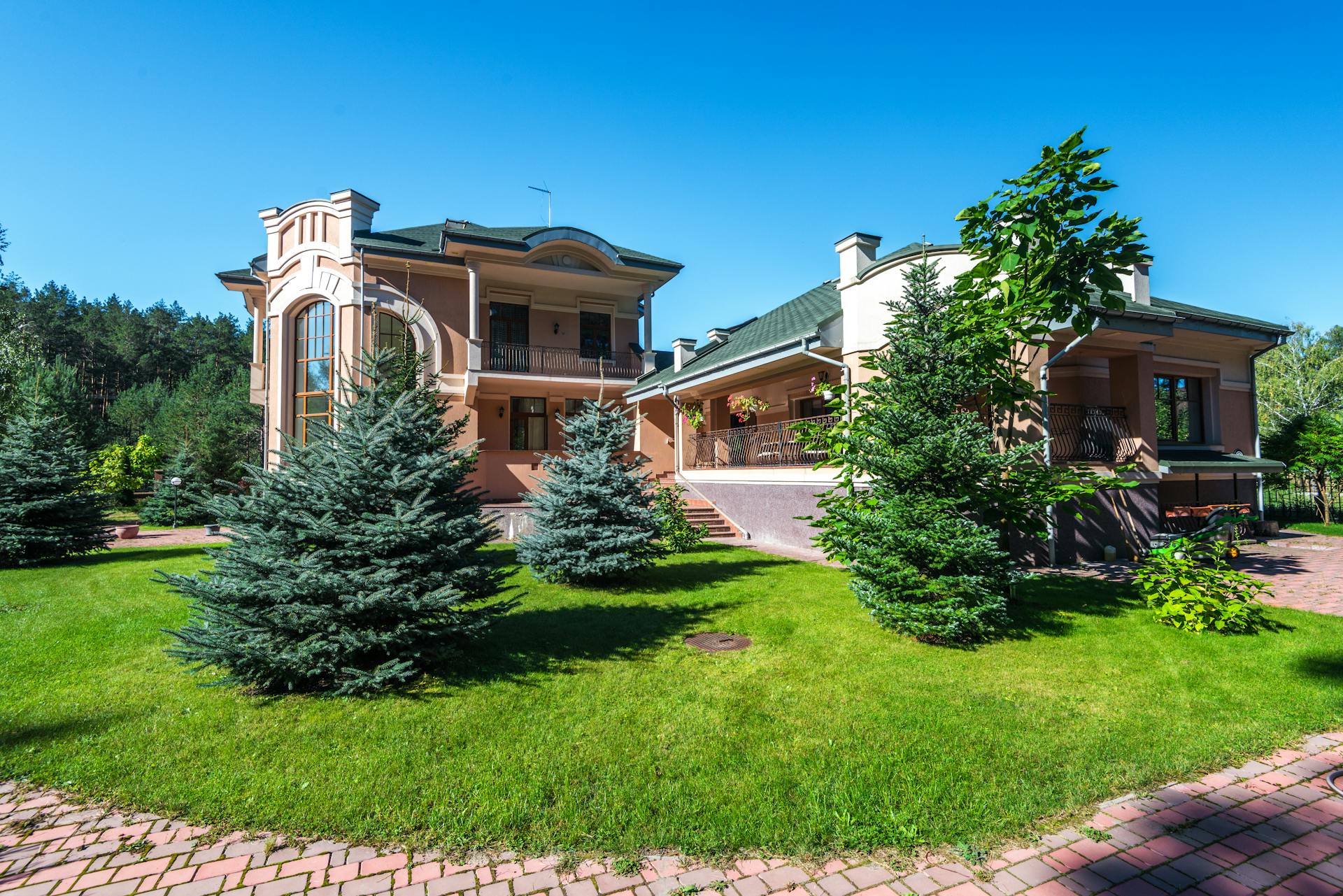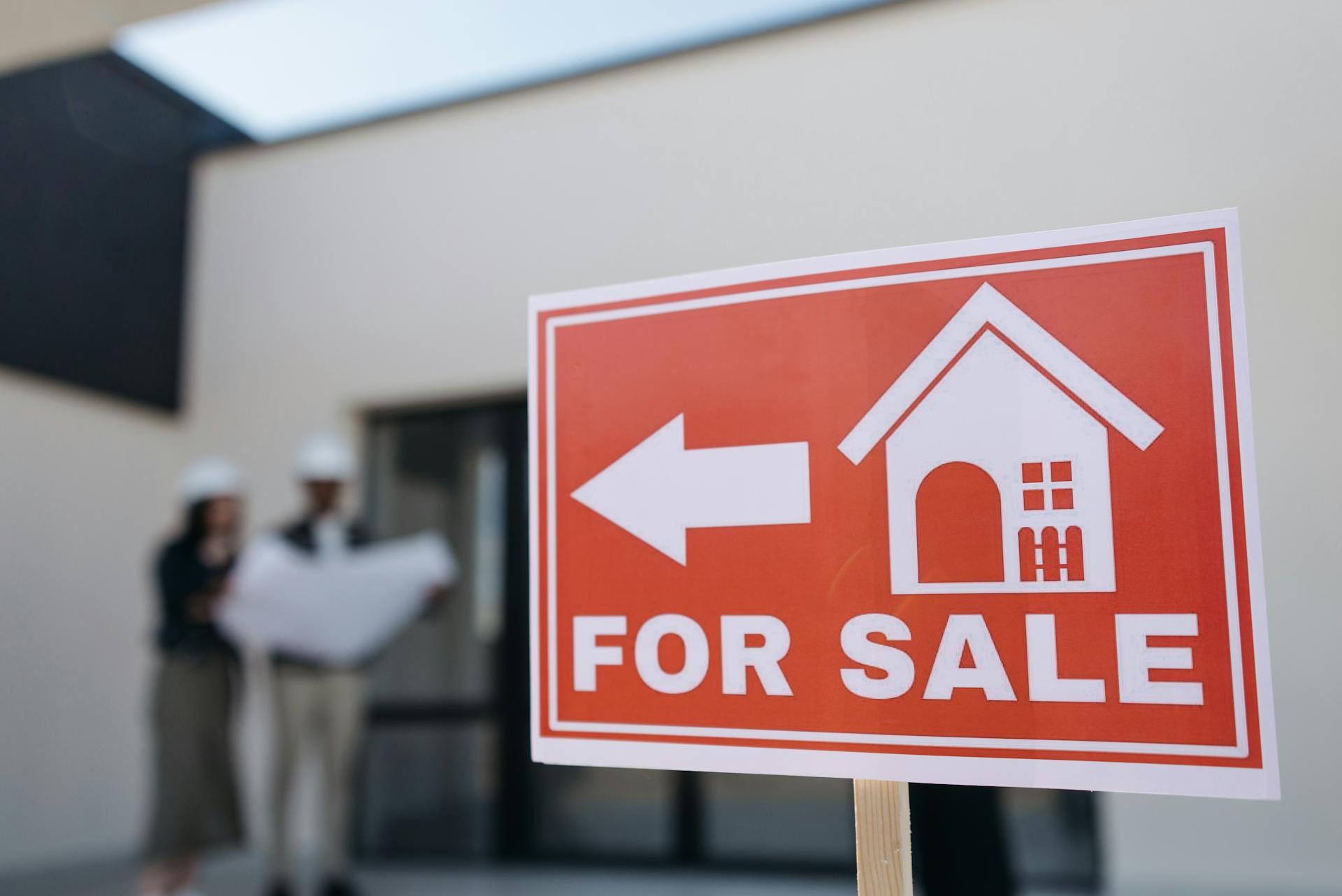
Real estate insurance is a crucial investment for property owners, protecting against unforeseen events and financial losses. There are several types of real estate insurance, each serving a unique purpose.
Liability insurance covers damages or injuries to third parties, such as tenants or visitors, and can be tailored to fit specific business needs. For example, a landlord may require higher liability coverage to account for the number of tenants in a building.
Property insurance, on the other hand, protects the physical structure of the property itself, including damage from natural disasters, theft, or vandalism. This type of insurance can be further divided into two categories: dwelling and other structures.
Types of Real Estate Insurance
There are various types of real estate insurance, and understanding them can help you make informed decisions about your property.
The most common types of homeowners insurance policies are HO-3 and HO-5, which offer different levels of protection. HO-3 policies cover damage to your house from all problems except ones that are specifically listed as exclusions, while HO-5 policies provide better coverage for your belongings.
Readers also liked: Insurance for 5 Unit Apartment Building
Homeowners insurance policies can also be categorized as basic, broad, or special form policies. Basic policies typically cover common risks or perils, such as damage from fire, lightning, or windstorm. Broad policies provide basic form coverage plus coverage for additional perils, like water damage or structural collapse.
In Texas, commercial property insurance policies generally fall into one of three categories: basic, broad, or special form policies. Basic policies typically cover common risks or perils, such as damage from fire, lightning, windstorm, vehicles, aircraft, or civil commotion.
Here's a breakdown of the main types of commercial property insurance policies:
Commercial property insurance can also include additional coverage for specific risks, such as flood damage, natural disasters, or crime.
Homeowners Insurance
Homeowners insurance is a must-have for any homeowner, and it's essential to understand the different types of policies available. An HO-3 policy is the most common type of homeowners insurance, covering your house and belongings, including liability, medical payments to others, and additional living expenses.
For more insights, see: Home Insurance Coverage Types
An HO-3 policy provides coverage for all perils except those specifically listed as exclusions, which can include power failure, industrial pollution, earthquake, and more. Your house will be covered at its replacement cost, while your personal property will be covered up to its actual cash value.
If you have a historic home or a home built more than 40 years ago, you may need an HO-8 policy, which covers your house and belongings for 10 specific perils, including fire, windstorm, and theft.
Here's a comparison of the dwelling and personal belongings coverage in an HO-3 and HO-5 policy:
HO-3: Special
The HO-3: Special Form is the most common type of homeowners insurance, and for good reason. It provides coverage for your home against damages caused by any peril except for those specifically excluded in the policy.
Some perils commonly excluded from an HO-3 policy include earthquake, flood, landslide/mudslide, nuclear accident, and sinkhole. These exclusions are typically found in the policy itself.
A different take: 3 Types of Home Daycare Insurance
An HO-3 policy will pay to repair or replace your house, up to your policy limits, as long as the damage was not due to one of these excluded perils. This is often referred to as an "open peril" policy.
The HO-3 policy also provides coverage for your belongings, but only against named perils listed in the policy. This typically corresponds to the named perils found in an HO-2 policy.
Some common perils covered by an HO-3 policy for personal property include fire or lightning, windstorm or hail, explosion, and theft. Your personal property will be covered at its actual cash value, unless you add an endorsement to provide replacement coverage.
The HO-3 policy is a good option for most homeowners, as it provides a broad level of coverage for your home and personal property. However, it's essential to review your policy carefully to understand what is covered and what is not.
Here are some common exclusions to look out for in an HO-3 policy:
- Earthquake
- Flood
- Landslide/mudslide
- Nuclear accident
- Sinkhole
- Neglect
- Act of war or government action
By understanding the HO-3 policy and its exclusions, you can make informed decisions about your homeowners insurance coverage.
What is an HO-8?
An HO-8 home insurance policy is designed for older homes built more than 40 years ago, where the cost of rebuilding is higher than the home's market value.
Historic homes and registered landmarks often have HO-8 policies, which cover only 10 specific perils listed in the policy.
These perils include fire or lightning, windstorm or hail, explosion, and more, which are detailed in the following list:
- Fire or lightning
- Windstorm or hail
- Explosion
- Riot or civil commotion
- Aircraft
- Vehicles
- Smoke
- Vandalism or malicious mischief
- Theft
- Volcanic eruption
This type of policy also includes coverage for liability, medical payments to others, and additional living expenses.
Modified Coverage
Modified Coverage is a type of insurance that's specifically designed for homes that don't meet the insurer's standards for other types of coverage.
These homes are often at high risk of loss or damage, or have a replacement cost that's higher than their actual cash value.
HO-8 policies, which fall under Modified Coverage, provide coverage against named perils, just like HO-1 policies.
The amount of coverage offered by an HO-8 policy is based on the home's actual cash value, not its replacement cost.
This type of policy is often held by older homes with outdated features, such as aluminum wiring or a damaged roof.
Curious to learn more? Check out: State Farm Whole Life Insurance Cash Out
Other Coverage Options
Riders provide additional coverage for specific events, sort of like an add-on to your regular homeowners insurance policy.
Flood insurance is a common rider that you may want to consider, especially if you live in a high-risk flood area.
Sewer backup/pipe coverage is another type of rider that can protect you from unexpected water damage.
Other structures coverage is a rider that extends your policy to cover damage to detached structures like sheds or garages.
You may also want to consider earthquake coverage, especially if you live in an area prone to earthquakes.
Consider reading: Fire Damage Insurance Claim Lawyers
Policy Types for Specific Situations
For business owners who operate from their own premises, commercial building insurance is vital. It offers coverage for the physical structure of your business, including fixtures, fittings, and installations, protecting you from financial losses due to damage or destruction caused by fire, storm, or break-ins.
If your business is located in an area prone to flooding, you'll want to consider flood insurance. This type of insurance provides coverage for losses due to flood-related incidents, which are often not covered under standard commercial property insurance policies.
Business interruption insurance is essential for companies that may need to halt operations due to unforeseen events. By covering the money that would have been made during the disruption, business interruption insurance can help alleviate financial constraints caused by loss of business.
Related reading: Intact Financial
Types of Policies
There are various types of policies to consider, depending on your situation. For homeowners, there are eight standard types of policies, including HO-1, HO-2, HO-3, HO-4, HO-5, HO-6, HO-7, and HO-8.
The most common types of policies held by homeowners are HO-3 and HO-5. These policies offer different types and levels of protection, so it's essential to choose the one that suits your needs. For instance, an HO-3 policy provides basic coverage, while an HO-5 policy offers more comprehensive coverage.
If you're a renter, an HO-4 policy is likely sufficient. However, if you own a condo or co-op, an HO-6 policy might be more suitable. Mobile homes require an HO-7 policy, while older homes may need an HO-8 policy.
For commercial property insurance, there are different types of policies to consider. Basic commercial insurance form policies typically cover common risks, such as damage from fire, lightning, and windstorms. Broad commercial insurance form policies provide basic form coverage plus additional perils, such as water damage and structural collapse.
Intriguing read: What Are the 7 Types of Life Insurance

Special commercial insurance form policies cover against all types of losses except those specifically excluded. Most commercial property insurance policies cover damage from windstorms, except in counties on the Texas coast. If your business is in one of Texas' coastal counties, you'll likely need a separate windstorm policy.
Here's a summary of the main types of policies:
It's essential to read your policy carefully and understand what's covered and what's not. You may need to buy additional coverages or specialized policies to fully protect your business or home.
Texas Coastal Counties
If you're a homeowner in Texas, you may be aware that windstorm insurance coverage can be a challenge in certain coastal counties. Aransas County, Brazoria County, and 10 other counties have windstorm insurance coverage exceptions.
These counties are located in a high-risk area for windstorms, which is why special considerations are in place for insurance coverage. This is especially important for homeowners who live in areas prone to hurricanes and tropical storms.
If you live in one of these counties, you'll need to take extra steps to protect your property from wind damage. This might include installing storm shutters or impact-resistant windows.
Here are the Texas Coastal Counties with windstorm insurance coverage exceptions:
- Aransas County
- Brazoria County
- Calhoun County
- Cameron County
- Chambers County
- Galveston County
- Jefferson County
- Kenedy County
- Kleberg County
- Matagorda County
- Nueces County
- Refugio County
- San Patricio County
- Willacy County
- Other areas as designated by the Commissioner of Insurance.
Condo/Co-Op
If you live in a condo or co-op, you may think that your association or corporation has got you covered. But, that's not exactly the case. The insurance they have is only for some things, not your personal items or the interior of your unit.
You'll need to get your own condo/co-op insurance to protect yourself from losses like fire, lightning, theft, and vandalism. This type of insurance can also save you money by covering safety devices like alarm systems or deadbolts.
A personal property calculator can help you figure out how much coverage you need. It's a good idea to use one to get an estimate of how much you'll need to cover your belongings.
For another approach, see: Do I Need Comprehensive Insurance on an Old Car
Here are some key things to consider when getting condo/co-op insurance:
- Protection for losses such as fire, lightning, theft, and vandalism
- Save money for having safety devices like alarm systems or deadbolts
- Use a personal property calculator to calculate how much coverage you may need
For example, if you have a lot of valuable items, you'll want to make sure you're covered for their full value. This way, if something happens to them, you'll be able to replace them without breaking the bank.
Mobile
Mobile homes require special insurance coverage. An HO-7 policy is specifically designed for mobile homes, covering damage to the structure, but only when it's stationary.
If you own a mobile home, you're likely familiar with its unique characteristics. An HO-7 policy covers single and double-wide manufactured homes, mobile homes, trailers, sectional homes, and modular homes.
Coverage for personal belongings is limited to specific perils listed in the policy. This means you'll need to carefully review your policy to understand what's covered and what's not.
To calculate how much coverage you need, use GEICO's personal property calculator. This tool can help you determine the right amount of coverage for your belongings.
A fresh viewpoint: What Are the 7 Types of Insurance
An HO-7 policy does not provide coverage when the home is in transit. So, if you're planning to move your mobile home, you'll need to take extra precautions to protect your investment.
Here are some types of mobile homes that are typically covered by an HO-7 policy:
- Single and double-wide manufactured homes
- Single and double-wide mobile homes
- Trailers
- Sectional homes
- Modular homes
Frequently Asked Questions
What is the difference between HO3 and HO5 and HO6?
Difference between HO3, HO5, and HO6 policies: HO3 and HO5 cover homes and personal property differently, while HO6 specifically covers condo owners for everything inside their unit. Learn more about the unique features of each policy type
Sources
- https://matic.com/blog/8-types-of-homeowners-insurance-policies-to-know/
- https://www.geico.com/property-insurance/
- https://econosurance.com/commercial-insurance/types-of-commercial-property-insurance
- https://cravenswarren.com/commercial/commercial-property-insurance/types-of-commercial-property-policies
- https://www.forbes.com/advisor/homeowners-insurance/policy-types/
Featured Images: pexels.com


